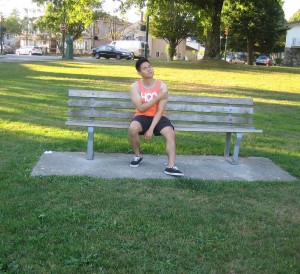The acromioclavicular or AC joint is located on the peak of the shoulder where the acromion process of the shoulder blade links with the lateral part of the collarbone. This joint enables the shoulder blade to slide on the rear part of the ribcage.
https://www.youtube.com/watch?v=oJz76hYa4jI
The rotational function of the joint enables full range of motion when the arm is used to perform overhead movements. Injuries to the AC joint can occur during falls on an extended arm or when the entire body weight lands directly on the joint. Dislocation of the joint is quite common and frequently occurs among those who play contact sports.
Pain
Always bear in mind that pain is the initial and usual symptom of AC joint injuries. It is basically an indication by the body that damage occurred and prompts the individual to be careful when using the affected limb.

The pain is typically felt right away but for minor sprains; it might not start until the following day. Take note that this symptom is evident due to tears in the ligaments that support the joint together. Supporting the arm under a sling will minimize the strain on the ligaments and lessen the symptoms. You can apply an ice pack for 20 minutes at a time to effectively manage the pain.
Edema
Edema or inflammation in the joint is another initial response to injury. Since the AC joint is relatively small, the degree of edema possible within the joint space is also minimal.
Any increase in the amount of fluid present in the joint space can also add up to the pain in the shoulder and also limits arm movement. In addition, edema can be managed with the application of ice packs and with non-steroidal anti-inflammatory drugs (NSAIDs).
Weakness
Depending on the severity of the impact, AC joint injuries can also involve damage to the muscular structure of the shoulder joint. Tears or strains on the shoulder muscles can lead to inability to produce normal muscle contraction and there is weakness in the movements performed by the individual.
Significant tears require surgery but less severe injuries typically improve with rest and gradual return to normal use of the arm. In some cases where the muscles are not torn, weakness of the shoulder occurs due to muscle atrophy from lack of use.
Reduced range of motion
Any form of damage to the AC joint results to poor biomechanics of the joint as well as inability to completely raise the arm over the head. Take note that the ligaments that hold the joint together provide stability to allow the shoulder blade to move on the fixed collarbone.
The tears on the ligaments will disrupt the stability while movement becomes erratic. In case the tears in the ligaments are minor, the range of motion might be close to normal but can affect the ability to utilize the extremity for throwing movements. Take note that therapy is oftentimes needed to restore full range of motion.
Joint dislocation
The severity of damage to the AC joint is often categorized as grades of dislocation. It is important to note that the grades range from 1-6.
If there is only minimal damage to the joint, it is difficult to see any issues unless an X-ray or MRI is performed. As for serious injuries, the damage is easier to locate with the naked eye.
Accurate grading for grades 2-6 is carried out via an X-ray or MRI regardless of how evident the damage is upon visual assessment. Even after the joint has healed and returned to normal functioning, there is slight abnormality in the shape of the area.
